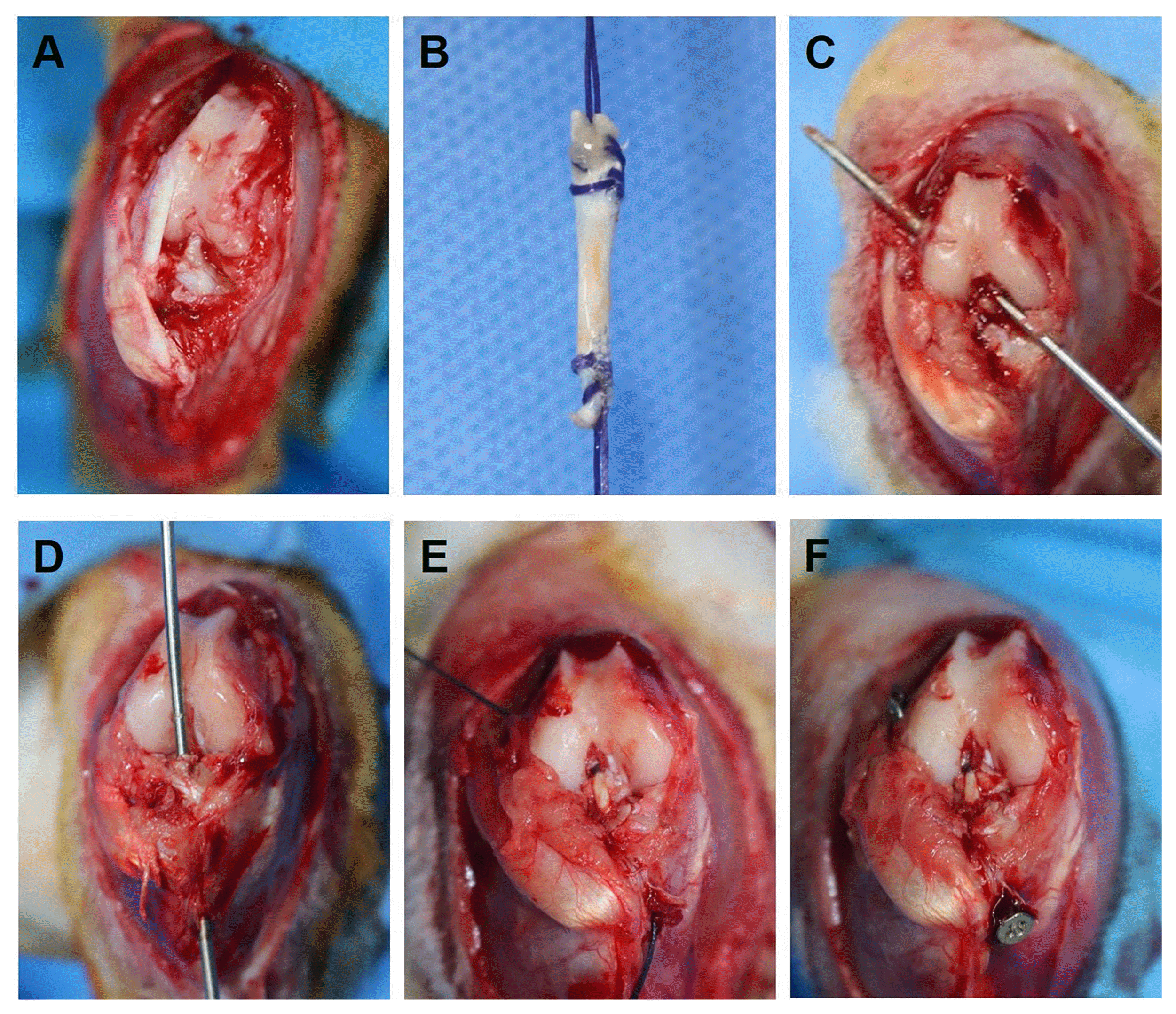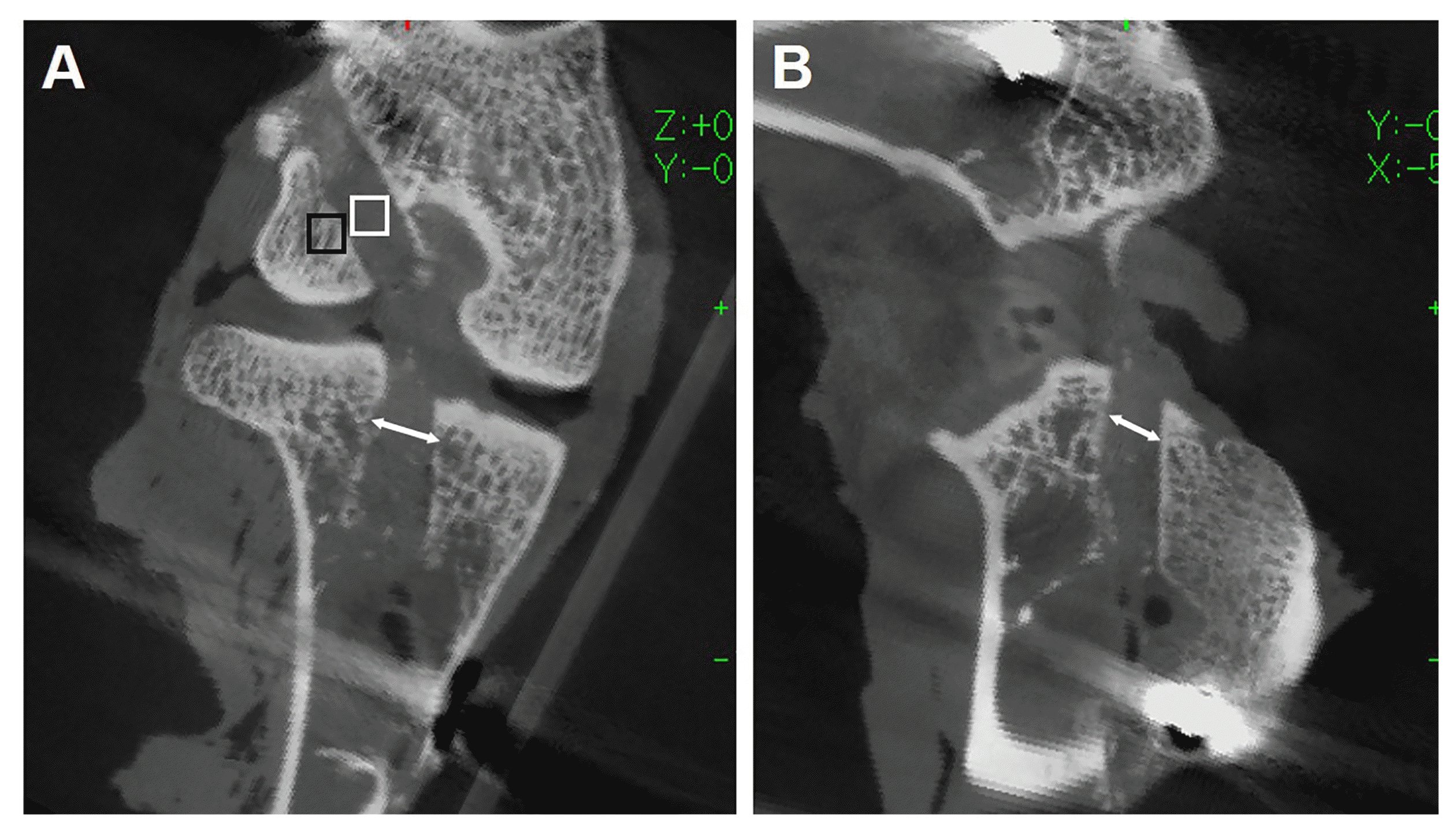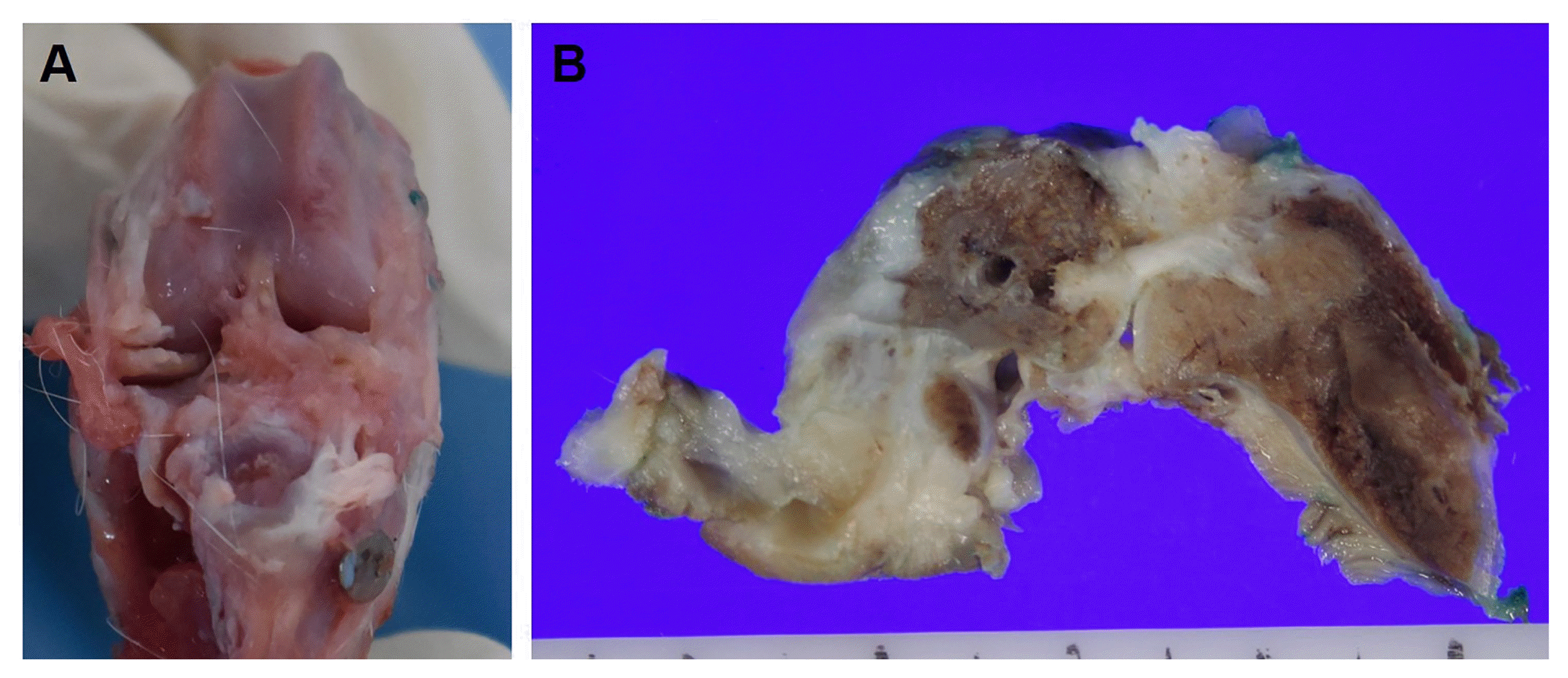2. Levine JW, Kiapour AM, Quatman CE, Wordeman SC, Goel VK, Hewett TE, Demetropoulos CK. Clinically relevant injury patterns after an anterior cruciate ligament injury provide insight into injury mechanisms. Am J Sports Med. 2013; 41:385–395. DOI:
10.1177/0363546512465167. PMID:
23144366. PMCID:
3935824.

3. Sandberg R, Balkfors B, Nilsson B, Westlin N. Operative versus non-operative treatment of recent injuries to the ligaments of the knee. A prospective randomized study. J Bone Joint Surg Am. 1987; 69:1120–1126. DOI:
10.2106/00004623-198769080-00002. PMID:
3312204.

4. Kaplan N, Wickiewicz TL, Warren RF. Primary surgical treatment of anterior cruciate ligament ruptures. A long-term follow-up study. Am J Sports Med. 1990; 18:354–358. DOI:
10.1177/036354659001800404. PMID:
2206080.

5. Strand T, Mølster A, Hordvik M, Krukhaug Y. Long-term follow-up after primary repair of the anterior cruciate ligament: clinical and radiological evaluation 15–23 years postoperatively. Arch Orthop Trauma Surg. 2005; 125:217–221. DOI:
10.1007/s00402-004-0766-2. PMID:
15875231.

6. Noyes FR, Butler DL, Grood ES, Zernicke RF, Hefzy MS. Biomechanical analysis of human ligament grafts used in knee-ligament repairs and reconstructions. J Bone Joint Surg Am. 1984; 66:344–352. DOI:
10.2106/00004623-198466030-00005. PMID:
6699049.

7. Woo SL, Gomez MA, Seguchi Y, Endo CM, Akeson WH. Measurement of mechanical properties of ligament substance from a bone-ligament-bone preparation. J Orthop Res. 1983; 1:22–29. DOI:
10.1002/jor.1100010104. PMID:
6679572.

8. Melhorn JM, Henning CE. The relationship of the femoral attachment site to the isometric tracking of the anterior cruciate ligament graft. Am J Sports Med. 1987; 15:539–542. DOI:
10.1177/036354658701500603. PMID:
3425780.

9. Muneta T, Yamamoto H, Sakai H, Ishibashi T, Furuya K. Relationship between changes in length and force in in vitro reconstructed anterior cruciate ligament. Am J Sports Med. 1993; 21:299–304. DOI:
10.1177/036354659302100222. PMID:
8465928.

10. Kurosaka M, Yoshiya S, Andrish JT. A biomechanical comparison of different surgical techniques of graft fixation in anterior cruciate ligament reconstruction. Am J Sports Med. 1987; 15:225–229. DOI:
10.1177/036354658701500306. PMID:
3303979.

11. Nikolaou VS, Efstathopoulos N, Wredmark T. Hamstring tendons regeneration after ACL reconstruction: an overview. Knee Surg Sports Traumatol Arthrosc. 2007; 15:153–160. DOI:
10.1007/s00167-006-0160-4. PMID:
16917787.

12. Gulotta LV, Rodeo SA. Biology of autograft and allograft healing in anterior cruciate ligament reconstruction. Clin Sports Med. 2007; 26:509–524. DOI:
10.1016/j.csm.2007.06.007. PMID:
17920950.

13. Bissell L, Tibrewal S, Sahni V, Khan WS. Growth factors and platelet rich plasma in anterior cruciate ligament reconstruction. Curr Stem Cell Res Ther. 2015; 10:19–25. DOI:
10.2174/1574888X09666140710102002.

14. Vavken P, Sadoghi P, Murray MM. The effect of platelet concentrates on graft maturation and graft-bone interface healing in anterior cruciate ligament reconstruction in human patients: a systematic review of controlled trials. Arthroscopy. 2011; 27:1573–1583. DOI:
10.1016/j.arthro.2011.06.003. PMID:
21862277. PMCID:
3206130.

15. Rodeo SA, Suzuki K, Deng XH, Wozney J, Warren RF. Use of recombinant human bone morphogenetic protein-2 to enhance tendon healing in a bone tunnel. Am J Sports Med. 1999; 27:476–488. DOI:
10.1177/03635465990270041201. PMID:
10424218.

16. Ouyang HW, Goh JC, Lee EH. Use of bone marrow stromal cells for tendon graft-to-bone healing: histological and immunohistochemical studies in a rabbit model. Am J Sports Med. 2004; 32:321–327. DOI:
10.1177/0095399703258682. PMID:
14977654.

17. Lim JK, Hui J, Li L, Thambyah A, Goh J, Lee EH. Enhancement of tendon graft osteointegration using mesenchymal stem cells in a rabbit model of anterior cruciate ligament reconstruction. Arthroscopy. 2004; 20:899–910. DOI:
10.1016/S0749-8063(04)00653-X. PMID:
15525922.

18. Soon MY, Hassan A, Hui JH, Goh JC, Lee EH. An analysis of soft tissue allograft anterior cruciate ligament reconstruction in a rabbit model: a short-term study of the use of mesenchymal stem cells to enhance tendon osteointegration. Am J Sports Med. 2007; 35:962–971. DOI:
10.1177/0363546507300057. PMID:
17400750.

19. Van Eijk F, Saris DB, Riesle J, Willems WJ, Van Blitterswijk CA, Verbout AJ, Dhert WJ. Tissue engineering of ligaments: a comparison of bone marrow stromal cells, anterior cruciate ligament, and skin fibroblasts as cell source. Tissue Eng. 2004; 10:893–903. DOI:
10.1089/1076327041348428. PMID:
15265307.

20. Beyer Nardi N, da Silva Meirelles L. Mesenchymal stem cells: isolation, in vitro expansion and characterization. Stem Cells Handb Exp Pharmacol. 2006; (174):249–282. DOI:
10.1007/3-540-31265-X_11.

22. Pittenger MF, Mackay AM, Beck SC, Jaiswal RK, Douglas R, Mosca JD, Moorman MA, Simonetti DW, Craig S, Marshak DR. Multilineage potential of adult human mesenchymal stem cells. Science. 1999; 284:143–147. DOI:
10.1126/science.284.5411.143. PMID:
10102814.

23. Awad HA, Boivin GP, Dressler MR, Smith FN, Young RG, Butler DL. Repair of patellar tendon injuries using a cell-collagen composite. J Orthop Res. 2003; 21:420–431. DOI:
10.1016/S0736-0266(02)00163-8. PMID:
12706014.

24. Li F, Jia H, Yu C. ACL reconstruction in a rabbit model using irradiated Achilles allograft seeded with mesenchymal stem cells or PDGF-B gene-transfected mesenchymal stem cells. Knee Surg Sports Traumatol Arthrosc. 2007; 15:1219–1227. DOI:
10.1007/s00167-007-0385-x. PMID:
17687543.

26. Zazgyva AM, Gurzu S, Jung I, Nagy Ö, Mühlfay G, Pop TS. S53P4 bioactive glass and fibrin glue for the treatment of osteochondral lesions of the knee - a preliminary in vivo study in rabbits. Rom J Morphol Embryol. 2015; 56:1085–1090. PMID:
26662143.
27. Hao ZC, Wang SZ, Zhang XJ, Lu J. Stem cell therapy: a promising biological strategy for tendon-bone healing after anterior cruciate ligament reconstruction. Cell Prolif. 2016; 49:154–162. DOI:
10.1111/cpr.12242. PMID:
26929145.

28. Bachy M, Sherifi I, Zadegan F, Petrover D, Petite H, Hannouche D. Anterior cruciate ligament surgery in the rabbit. J Orthop Surg Res. 2013; Aug. 19. [Epub]. DOI:
10.1186/1749-799X-8-27. PMID:
23957941. PMCID:
3765288.

29. Gargiulo P, Helgason T, Reynisson PJ, Helgason B, Kern H, Mayr W, Ingvarsson P, Carraro U. Monitoring of muscle and bone recovery in spinal cord injury patients treated with electrical stimulation using three-dimensional imaging and segmentation techniques: methodological assessment. Artif Organs. 2011; 35:275–281. DOI:
10.1111/j.1525-1594.2011.01214.x. PMID:
21401674.

31. Pinczewski LA, Clingeleffer AJ, Otto DD, Bonar SF, Corry IS. Integration of hamstring tendon graft with bone in reconstruction of the anterior cruciate ligament. Arthroscopy. 1997; 13:641–643. DOI:
10.1016/S0749-8063(97)90194-8. PMID:
9343656.

32. Abe S, Kurosaka M, Iguchi T, Yoshiya S, Hirohata K. Light and electron microscopic study of remodeling and maturation process in autogenous graft for anterior cruciate ligament reconstruction. Arthroscopy. 1993; 9:394–405. DOI:
10.1016/S0749-8063(05)80313-5. PMID:
8216570.

33. Goradia VK, Rochat MC, Kida M, Grana WA. Natural history of a hamstring tendon autograft used for anterior cruciate ligament reconstruction in a sheep model. Am J Sports Med. 2000; 28:40–46. DOI:
10.1177/03635465000280011901. PMID:
10653542.

34. Blickenstaff KR, Grana WA, Egle D. Analysis of a semitendinosus autograft in a rabbit model. Am J Sports Med. 1997; 25:554–559. DOI:
10.1177/036354659702500420. PMID:
9240991.

35. Grana WA, Egle DM, Mahnken R, Goodhart CW. An analysis of autograft fixation after anterior cruciate ligament reconstruction in a rabbit model. Am J Sports Med. 1994; 22:344–351. DOI:
10.1177/036354659402200309. PMID:
8037275.

36. Webster KE, Chiu JJ, Feller JA. Impact of measurement error in the analysis of bone tunnel enlargement after anterior cruciate ligament reconstruction. Am J Sports Med. 2005; 33:1680–1687. DOI:
10.1177/0363546505275489. PMID:
16093539.

37. Vadalà A, Iorio R, De Carli A, Argento G, Di Sanzo V, Conteduca F, Ferretti A. The effect of accelerated, brace free, rehabilitation on bone tunnel enlargement after ACL reconstruction using hamstring tendons: a CT study. Knee Surg Sports Traumatol Arthrosc. 2007; 15:365–371. DOI:
10.1007/s00167-006-0219-2. PMID:
17149647.

38. Cameron M, Buchgraber A, Passler H, Vogt M, Thonar E, Fu F, Evans CH. The natural history of the anterior cruciate ligament-deficient knee. Changes in synovial fluid cytokine and keratan sulfate concentrations. Am J Sports Med. 1997; 25:751–754. DOI:
10.1177/036354659702500605. PMID:
9397261.

39. Goodrich LR, Chen AC, Werpy NM, Williams AA, Kisiday JD, Su AW, Cory E, Morley PS, McIlwraith CW, Sah RL, Chu CR. Addition of mesenchymal stem cells to autologous platelet-enhanced fibrin scaffolds in chondral defects: does it enhance repair? J Bone Joint Surg Am. 2016; 98:23–34. DOI:
10.2106/JBJS.O.00407. PMID:
26738900. PMCID:
4697360.








 PDF
PDF Citation
Citation Print
Print



 XML Download
XML Download